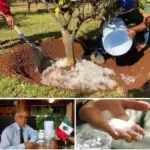Dam failures are catastrophic events with the potential to unleash a torrent of destruction. From overflowing waters to toxic mudslides, these incidents serve as a stark reminder of the immense power of water and the crucial role dam safety plays in protecting communities.
This article dives deep into dam failures, exploring the causes behind these events and showcasing some of the most horrifying (and eye-opening) dam failures caught on camera. Buckle up, because we’re about to explore the terrifying world of dam breaches and their devastating consequences.
What Exactly is a Dam Failure?
Imagine a dam as a guardian, holding back a massive reservoir of water. A dam failure occurs when this guardian can no longer withstand the pressure, and the water surges forward in an uncontrolled release. This can happen for various reasons, including:
- Flawed Design: Sometimes, dams are simply built with weaknesses. Imagine using a pool noodle to hold back a tsunami – that’s not going to work! Poor design choices or inadequate construction materials can lead to dam failures down the line.
- Maintenance Mishaps: Dams require constant upkeep. Cracks, leaks, and other issues need to be addressed promptly. If left unattended, these problems can snowball into catastrophic dam failures.
- Nature’s Fury: Mother Nature throws some serious punches. Earthquakes, floods, and extreme weather events can overwhelm even the most robust dams.
- Overflowing Oopsie!: When a dam gets too full, water spills over the top. This erosion weakens the structure, potentially leading to a dam failure.
Dam Failures on Camera: A Glimpse into the Devastation
While dam failures are rare, their consequences are immense. Let’s take a look at some of the most shocking dam failures captured on video:
- Lake Dunlap Dam, Texas (2019): This dam, built in the 1920s, finally succumbed in 2019, unleashing a massive flood downstream. Thankfully, the dam has since been rebuilt.
- Rapidan Dam, USA (Recent): A recent dam failure in the USA saw a section give way, releasing a torrent of water that caused widespread devastation. Experts are now investigating the cause, whether it was structural issues, maintenance neglect, or a heavy downpour.
- Brumadinho Dam, Brazil (2019): This dam collapse in 2019 unleashed a wave of toxic mud that engulfed everything in its path, highlighting the dangers of dam failures beyond just flooding.
- Mariana Dam, Brazil (2015): A few years before Brumadinho, the Mariana Dam disaster released a torrent of mining waste, causing immense environmental damage.
- Edenville Dam, Michigan (2020): This dam failure in 2020 caused major flooding, forcing evacuations and property damage.
- Laos Dam Collapse (2017): This catastrophic event resulted in devastating floods and loss of life, underlining the need for robust infrastructure and safety measures.
- Oroville Dam Crisis, California (2017): Mother Nature flexing her muscles! Erosion on the Oroville Dam’s spillway became so severe that nearly 200,000 people had to be evacuated to prevent a complete dam failure.
- Hidroituango Dam, Colombia (2018): A partial collapse of this dam in 2018 led to panic and destruction downstream. Rescue crews were deployed in a race against time.
- Ajka Tailings Dam Failure, Hungary (2010): Imagine a giant reservoir of toxic waste rupturing. That’s exactly what happened in Hungary in 2010, with a million cubic meters of red mud contaminating the surroundings.
- Tapovan Dam Failure, India (2021): A sudden glacial outburst in 2021 overwhelmed the Tapovan Dam, leading to devastating floods and loss of life. This incident serves as a chilling reminder of the power of nature.
Learning from the Past, Securing the Future
Dam failures are a sobering reminder of the importance of dam safety. Regular inspections, proper maintenance, and robust designs are crucial to prevent these tragedies. By learning from the past, we can ensure these colossal structures continue to serve their purpose safely and effectively.
Do you know of any other dam failures that should be included here? Leave a comment below and share your knowledge!


















